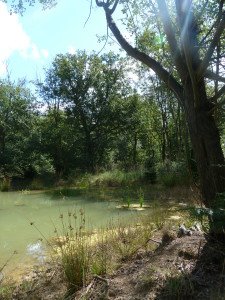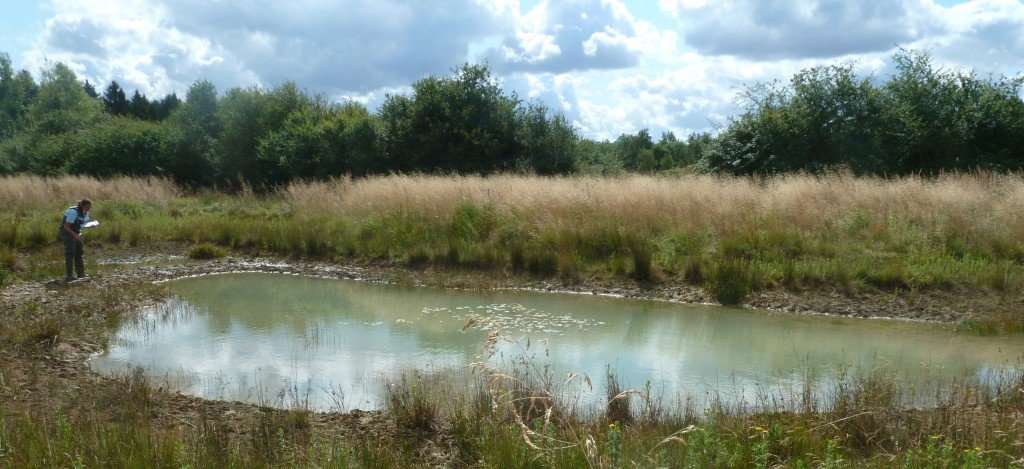New ponds support quarter of wetland plants – Million Ponds Project
11th February 2016
Cat Stokowska shares the first results from her research into the wildlife of new ponds made in the Million Ponds Project, and the contribution they make to the freshwater landscape

Back in December, I attended the British Ecological Society’s Annual Meeting in Edinburgh. Although I’ve been to a lot of academic conferences before, this was the first time I had ever presented research of my own – as well as being the first time that any findings from my PhD research into the Million Ponds Project (MPP) ponds have been released. The BES always holds a very welcoming conference, particularly for young researchers, so it was a really rewarding experience. Talking to people interested in the project (some of which had sought out my poster having heard of the MPP before!) also stirred up my excitement over where the analysis might take me next.
The poster shown is one of two typical formats through which research is presented at a scientific conference (the other option being a verbal presentation). This initial analysis is based on the plants we found in Oxfordshire’s four-year-old MPP ponds over the last two years of fieldwork. The main messages so far are as follows…
- Not all new ponds are the same – you might expect that if you dig a set of similar ponds they will turn out to be similar in terms of the wildlife they support. However, as we have seen in the past in older ponds, even ponds situated in the same field tend to vary widely in the number and type of species they support.
- New ponds add something different to the landscape – not only did the new ponds differ from one another, as a general rule they also tended to contain collections (or ‘communities’) of species that were different in character to older ponds in the Oxfordshire landscape.
- More ponds in more places are a great way to support wildlife – anybody who knows the Freshwater Habitats Trust would not be surprised to hear this because you know we love ponds – but genuinely, backed up by scientific evidence, the more individual ponds that were included in the analysis, and the more different sites, the higher the overall number of plant species were found. So keep digging..!
And overall, 25% of the UK’s wetland plant species were found in just 130 new ponds in Oxfordshire. Win!
 The next steps are going to be the more in-depth part of the analysis – trying to disentangle all the reasons why. Why do new ponds vary in the species that live in them? Looking past the numbers, what kinds of species were actually in the new ponds and what does this mean in relation to the aims of the Million Ponds Project as a conservation project? On the same train of thought, are the communities in new ponds different to those of the older ponds because they’re young and will naturally change to become similar to those older ponds as they develop (the ecological term for this is ‘succession’) or are they providing a different kind of habitat entirely?
The next steps are going to be the more in-depth part of the analysis – trying to disentangle all the reasons why. Why do new ponds vary in the species that live in them? Looking past the numbers, what kinds of species were actually in the new ponds and what does this mean in relation to the aims of the Million Ponds Project as a conservation project? On the same train of thought, are the communities in new ponds different to those of the older ponds because they’re young and will naturally change to become similar to those older ponds as they develop (the ecological term for this is ‘succession’) or are they providing a different kind of habitat entirely?
The plan for my PhD thesis is to try to answer some of these questions so that we can feed back the lessons into future pond creation work. For now though, I’m heading back to the lab to keep identifying my dragonflies, beetles, caddis flies, mayflies…
What next?
- Find out more about the Million Ponds Project and our vision of once again having a million ponds in the UK countryside
- Take a look at the Pond Creation Toolkit for help making the best possible ponds for wildlife
- Read about our research work and commitment to basing decisions on evidence
- Find out how your support helps to protect freshwater wildlife

